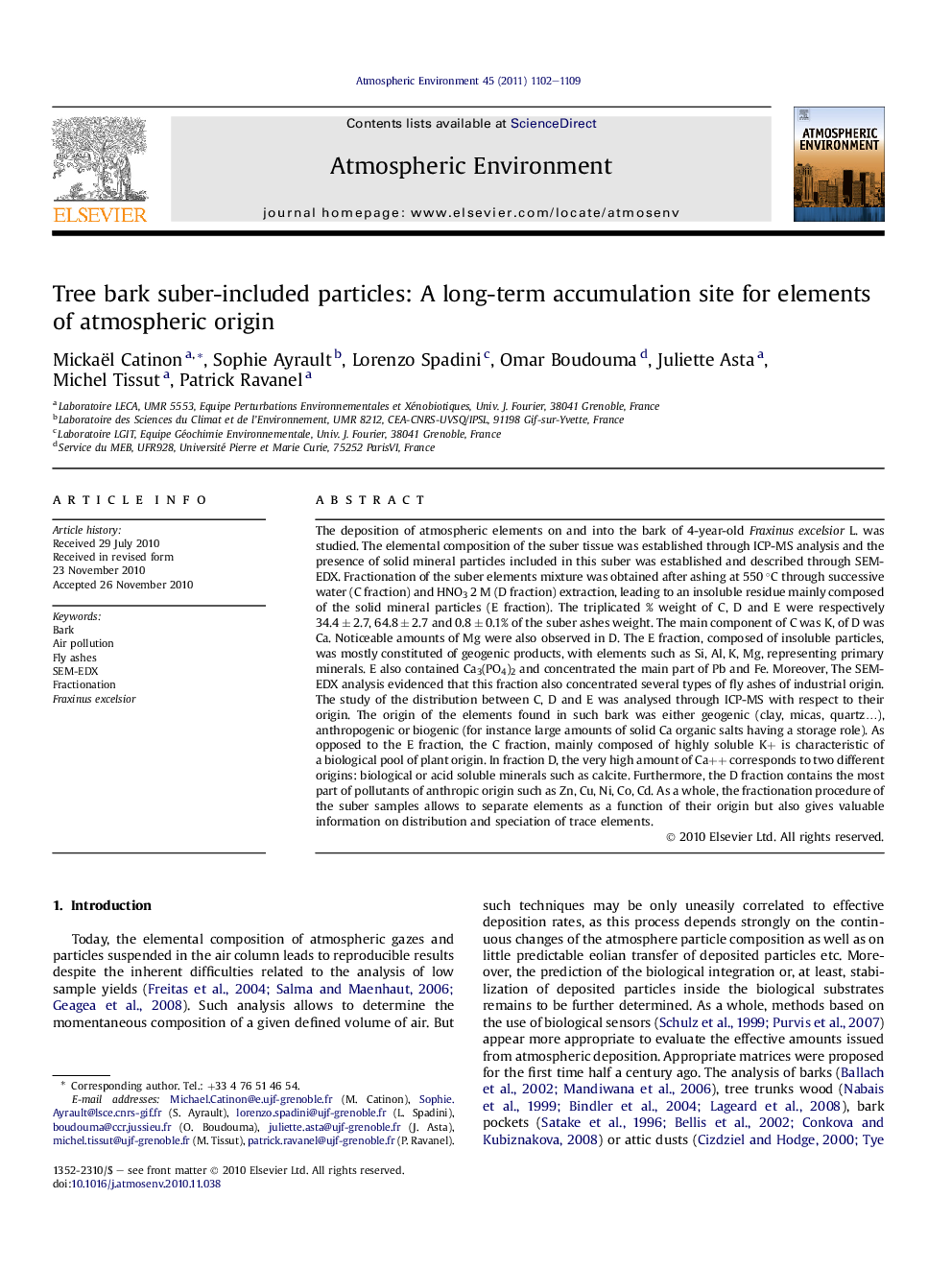| کد مقاله | کد نشریه | سال انتشار | مقاله انگلیسی | نسخه تمام متن |
|---|---|---|---|---|
| 4440094 | 1311047 | 2011 | 8 صفحه PDF | دانلود رایگان |

The deposition of atmospheric elements on and into the bark of 4-year-old Fraxinus excelsior L. was studied. The elemental composition of the suber tissue was established through ICP-MS analysis and the presence of solid mineral particles included in this suber was established and described through SEM-EDX. Fractionation of the suber elements mixture was obtained after ashing at 550 °C through successive water (C fraction) and HNO3 2 M (D fraction) extraction, leading to an insoluble residue mainly composed of the solid mineral particles (E fraction). The triplicated % weight of C, D and E were respectively 34.4 ± 2.7, 64.8 ± 2.7 and 0.8 ± 0.1% of the suber ashes weight. The main component of C was K, of D was Ca. Noticeable amounts of Mg were also observed in D. The E fraction, composed of insoluble particles, was mostly constituted of geogenic products, with elements such as Si, Al, K, Mg, representing primary minerals. E also contained Ca3(PO4)2 and concentrated the main part of Pb and Fe. Moreover, The SEM-EDX analysis evidenced that this fraction also concentrated several types of fly ashes of industrial origin. The study of the distribution between C, D and E was analysed through ICP-MS with respect to their origin. The origin of the elements found in such bark was either geogenic (clay, micas, quartz…), anthropogenic or biogenic (for instance large amounts of solid Ca organic salts having a storage role). As opposed to the E fraction, the C fraction, mainly composed of highly soluble K+ is characteristic of a biological pool of plant origin. In fraction D, the very high amount of Ca++ corresponds to two different origins: biological or acid soluble minerals such as calcite. Furthermore, the D fraction contains the most part of pollutants of anthropic origin such as Zn, Cu, Ni, Co, Cd. As a whole, the fractionation procedure of the suber samples allows to separate elements as a function of their origin but also gives valuable information on distribution and speciation of trace elements.
Research highlights
► Minerals of atmospheric origins can integrate tree suber.
► Fractionation of suber ashes gave first H2O solution (mostly K+, Na+).
► A HNO3 pH 2.5 solution contained most of the anthropogenic elements.
► In the remaining particles were geogenic components and anthropogenic fly ashes.
► In old trees, this fraction is able to represent an archive over several decades.
Journal: Atmospheric Environment - Volume 45, Issue 5, February 2011, Pages 1102–1109